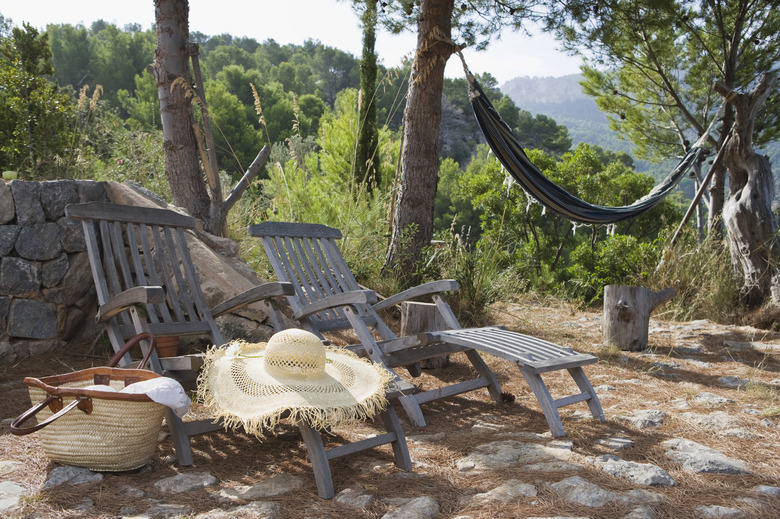How To Refinish Powder-Coated Patio Furniture
Things Needed
-
Sandpaper
-
Power washer
-
Paint
-
HVLP (high-volume, low-pressure) sprayer, brush or roller
-
Chemical stripper
Even though a powder-coated finish lasts longer than paint, there will eventually come a time when your outdoor patio furniture needs to be refinished. There are two main ways to refinish powder-coated furniture–strip it and start over, or apply paint over the existing powder. If the original job was properly prepared, it will be difficult to remove a powder-coated finish. One coat of powder is roughly equivalent to three or four coats of paint. Some commercially purchased furniture will only have one light coat of powder, but those powder coated by a reputable shop may have two or three coats of powder.
Step 1
Look over the current powder-coated finish to decide whether you need to strip the powder or if you can simply paint over it. Is it simply faded? Or are there peeling spots, chips or scratches?
Step 2
If the finish has not been penetrated and you do not see rust spots, you can simply sand the entire surface area to remove dirt and prepare for the new finish. Paint will not stick to powder that has not been scuffed, so make sure to fully sand all of the nooks and crannies.
Step 3
Strip the powder if you find that the current finish is damaged. Try power washing to remove dirt and possibly loose powder.
Step 4
Use a chemical stripper to speed up the process. Use the commercial version that removes up to eight to nine coats of paint, and following the manufacturer's directions. Apply the stripper with a disposable brush, let it sit for the recommended amount of time, and then scrape the residue away. Repeat if necessary.
Step 5
Strip the furniture with a sandblast machine if you have access to one. Note: sandblasting can heat the powder, creating a gummy mess that must be scraped off. The process of removing powder via sandblasting takes practice.
Step 6
Sand the surface of the bare metal or the powder if left intact.
Step 7
Apply a high-quality primer using spray paint or a paint sprayer for a smoother job than you'd get with a paint brush. While spraying, keep the can or sprayer moving to reduce paint buildup and runs. Do two or three passes over the entire surface to ensure a smooth, even coat. You may alternatively use a roller, though it will be difficult to maneuver into tight spaces. Allow the primer to dry.
Step 8
Sand the primer to remove runs, flaws and dust for a smooth final finish.
Step 9
Apply a high-quality paint using a sprayer, if possible, following the manufacturer's directions. Use the same technique used for the primer coat–keep the sprayer moving, and do several light passes. Allow the first light coat to dry, sand lightly, and apply a second coat of paint.
Step 10
Allow the paint to dry and fully cure before you use the furniture. Depending on the type of paint, it may take up to two to three weeks to fully cure. By allowing the paint to cure, you will achieve a smooth, long-lasting finish with no surface imperfections.
Tip
You can use alternative chemicals–such as acetone–to soften the powder, then scrape off the residue.
If at all possible, leave the powder intact–it is a good, rust preventative, protective base for paint.
Warning
When using chemicals, wear proper eye protection and gloves.
